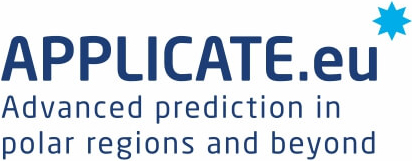Model development
Improved modelling capabilities will be achieved through improved process descriptions in the various components of the models. Our primary targets will be to address well-known problems in processes that contribute to momentum transfer at the surface and to the surface energy budget. Other improvements are related to coupling processes between the atmosphere and the land or sea-ice/ocean surface. A novel approach of a coupled single-column model will be extensively used as an intermediate step to constrain the model physics towards fully coupled modelling for NWP and climate. Based on a set of coordinated model experiments, using available and coming observations, we will assess the impact of model improvements.
Selected publications
- Koldunov, N. V., Danilov, S., Sidorenko, D., Hutter, N., Losch, M., Goessling, H., et al. (2019). Fast EVP Solutions in a High-Resolution Sea Ice Model. Journal of Advances in Modeling Earth Systems, 11, 1269–1284. https://doi.org/10.1029/2018MS001485
- Hartung, K., Svensson, G., Struthers, H., Deppenmeier, A.-L., and Hazeleger, W. (2018). An EC-Earth coupled atmosphere-ocean single-column model (AOSCM) for studying coupled marine and polar processes, Geosci. Model Dev., 11, 4117–4137, https://doi.org/10.5194/gmd-11-4117-2018.
- Arduini, G., Balsamo, G., Dutra, E., Day, J.J., Sandu, I., Bousseta, S., Haiden, T. (2019). Impact of a multi-layer snow scheme on near-surface weather forecasts. Journal of Advances in Modeling Earth Systems, 11, 4687-4710, https://doi.org/10.1029/2019MS001725
